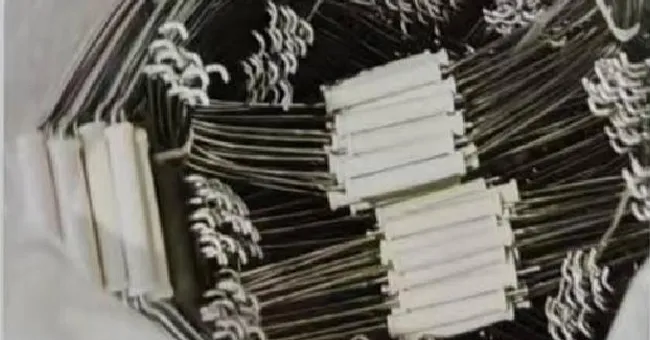-
 Phone:
Phone: -
 Email:
Email:

reinforcement tie wire
The Importance of Reinforcement Tie Wire in Construction
In the world of construction, the strength and durability of structures are paramount. To achieve reliable results, engineers and builders often utilize various materials and techniques. One essential component that often goes unnoticed but plays a critical role in ensuring structural integrity is reinforcement tie wire. This article delves into what reinforcement tie wire is, its applications, advantages, and why it is indispensable in modern construction projects.
What is Reinforcement Tie Wire?
Reinforcement tie wire is a type of wire used in concrete construction to bind together rebar or mesh. It is typically made from steel, providing the necessary strength to secure the reinforcement materials in place. The wire is flexible and can be bent easily, allowing it to accommodate various shapes and configurations of rebar, facilitating a robust connection that reinforces the overall structure.
Applications of Reinforcement Tie Wire
Reinforcement tie wire is predominantly employed in various construction applications, including
1. Reinforcing Concrete Structures Tie wire is crucial in reinforcing concrete beams, columns, slabs, and walls. By tying the rebar together, it ensures that the concrete can withstand tensile stresses that would otherwise cause cracking or failure.
2. Precast Components In precast construction, where concrete elements are cast in a controlled environment before being transported to the site, tie wire plays a vital role in maintaining the integrity of the reinforcement during the curing and handling processes.
3. Foundation Work When laying foundations, proper alignment and spacing of reinforcement bars are critical. Tie wire is used to ensure that the rebar remains positioned accurately, providing optimal support for the concrete that will be poured over it.
4. Brick and Block Work Tie wire is also employed in masonry work, helping to secure reinforcing bars or mesh within brick and block walls, especially where additional strength is required.
reinforcement tie wire

Advantages of Using Reinforcement Tie Wire
The use of reinforcement tie wire in construction offers several advantages
1. Enhanced Structural Integrity The primary benefit of tie wire is its ability to improve the strength of structural components. By securely holding the rebar in place, it prevents movement during the concrete pouring process, ensuring that the final product can bear the required loads.
2. Flexibility and Ease of Use Tie wire is lightweight and easy to handle, making it a convenient choice for construction workers. Its flexibility means it can be used in various configurations, adapting to the unique requirements of each project.
3. Cost-Effective Solution Since tie wire is relatively inexpensive compared to other reinforcement methods, it provides a cost-effective solution for enhancing the durability of structures without significantly increasing overall project costs.
4. Time Efficiency Using tie wire speeds up the construction process. The easy application allows workers to quickly secure the rebar, reducing labor time and making the construction timeline more efficient.
Conclusion
In conclusion, reinforcement tie wire is a vital component in the construction industry, often overlooked but essential for ensuring the strength and stability of concrete structures. Its applications span across various projects, from residential buildings to large-scale infrastructure. The advantages it offers, including enhanced structural integrity, flexibility, cost-effectiveness, and time efficiency, make it an indispensable tool for construction professionals.
As the demand for stronger, safer, and more durable structures continues to rise, the importance of reliable reinforcement methods, such as tie wire, cannot be underestimated. By providing a cost-efficient and reliable means of securing rebar within concrete forms, reinforcements tie wire contributes significantly to the overall safety and longevity of construction projects. Therefore, understanding its role and integrating it effectively in construction practices is crucial for engineers, architects, and builders aiming to create enduring structures that can withstand the test of time.
-
Wire Mesh for Every Need: A Practical SolutionNewsJul.25,2025
-
Steel Fences: Durable, Secure, and Stylish OptionsNewsJul.25,2025
-
Roll Top Fencing: A Smart Solution for Safety and SecurityNewsJul.25,2025
-
Cattle Farm Fencing Solutions for Maximum SecurityNewsJul.25,2025
-
Affordable Iron Binding Wire SolutionsNewsJul.25,2025
-
Affordable Galvanized Wire SolutionsNewsJul.25,2025
-
Wire Hanger Recycling IdeasNewsJul.25,2025








